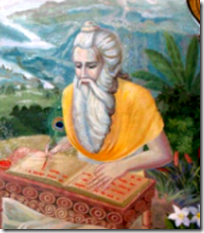Introduction:
Dharmasastras are ancient Indian texts that discuss and provide guidance on the duties and responsibilities of individuals in Hindu society. They cover a wide range of topics including laws, ethics, social customs, and religious rituals. They are considered to be a part of the larger corpus of Hindu texts known as the "Dharmasastras." These texts have been influential in shaping the traditional laws and customs of Hindu societies and continue to be studied and referenced in modern times.
Dharmasastras deal with the concept of dharma, which can be translated as "law" or "duty." These texts provide guidance on the duties and responsibilities of individuals in Hindu society, covering a wide range of topics such as laws, ethics, social customs, and religious rituals. They are considered as a source of Hindu law and is believed to be written during the period of 600 BCE to 300 CE. They are considered as a source of knowledge for Hindu law, and also for the understanding of various aspects of Hinduism like caste, rituals, and many other things.What is Dharma
according to Dharmasastras ?
Dharma is
believed to be the foundation of the cosmic order, and it is the duty of all
individuals to uphold and maintain this order by following the principles of
dharma. The Dharmasastras are texts that provide guidance on how to follow the
principles of dharma in all aspects of life, including in one's personal
conduct, in relationships with others, in one's profession, and in the
performance of religious rituals.
The word "Dharma" also implies the moral and ethical codes, the rules of conduct, and the way of life that is considered to be right and just for the society. The Dharmasastras texts can be considered as the ancient law books of Hinduism and it is believed that the principles in these texts are universal and eternal. They provide guidance on how to live a virtuous life and how to attain ultimate spiritual goals.
Types of
There are several types of Dharmasastras, which can be broadly categorized into four main categories:
- Smritis: These texts are considered to be of human origin and are believed to have been written by rishis (sages) or other learned individuals. They provide guidance on the performance of religious rituals, laws, and customs. Examples of Smritis include the Manu smriti, the Yajnavalkya Smriti, and the Narada Smriti.
- Shrautasutras: These texts deal primarily with the performance of Vedic rituals, such as the construction and use of the fire altar. Examples of Shrautasutras include the Ashvalayana Shrautasutra and the Katyayana Shrautasutra.
- Grihyasutras: These texts provide guidance on the performance of domestic rituals, such as the rituals associated with birth, marriage, and death. Examples of Grihyasutras include the Apastamba Grihyasutra and the Gobhila Grihyasutra.
- Dharmasutras: These texts deal primarily with the ethical and moral conduct of individuals and society. They provide guidance on issues such as the duties of different social classes, the treatment of guests, and the proper behavior of rulers. Examples of Dharmasutras include the Gautama Dharmasutra and the Baudhayana Dharmasutra.
These texts are considered as a source of Hindu law and is believed to be written during the period of 600 BCE to 300 CE. They are considered as a source of knowledge for Hindu law, and also for the understanding of various aspects of Hinduism like caste, rituals, and many other things.
Key Points to Remember about Dharmasastras:
Here are some key points to remember about Dharmasastras:
- Dharmasastras are ancient Indian texts that provide guidance on the duties and responsibilities of individuals in Hindu society.
- They cover a wide range of topics, including laws, ethics, social customs, and religious rituals, and are considered to be a part of the larger corpus of Hindu texts known as the "Dharmasastras.
- The term "dharma" in the context of Dharmasastras has a multi-faceted meaning, referring to the principles and guidelines that govern an individual's behavior and conduct in society.
- Dharmasastras texts can be considered as the ancient law books of Hinduism and are believed to be written during the period of 600 BCE to 300 CE.
- They provide guidance on how to live a virtuous life and how to attain ultimate spiritual goals and are also a source of knowledge for Hindu law, and also for the understanding of various aspects of Hinduism like caste, rituals, and many other things.
- There are several types of Dharmasastras, which can be broadly categorized into four main categories: Smritis, Shrautasutras, Grihyasutras, and Dharmasutras.
- These texts have been influential in shaping the traditional laws and customs of Hindu societies and continue to be studied and referenced in modern times.



Comments
Post a Comment